
Issue #: 145
Published: January / February 2016
- Price per issue - digital : 5.40€Digital magazine
- Price per issue - print : 6.20€Print magazine
- Access to Multihulls World digital archives Digital archives
Changing your multihull’s portlights is a job within the reach of any handyman... The main difficulty will be finding a source of Perspex not too far away from your boat. For the rest, follow our advice!
We all know that the average life expectancy of a sailing boat is 40 years... A lot longer than that of its portlights! What slowly but surely destroys your ‘little windows’ is of course the sun. Not the winter sun, which is low on the horizon, but the scorching midday sun... Under the combined action of the phenomena of expansion and ultraviolet, the portlight deteriorates, crazes and sometimes breaks. As for the watertight joint, it more often than not ends up by letting in a few drops. The portlights most affected are the biggest ones, oriented at an angle close to the horizontal. The darker the panel, the more it is sensitive to ageing. The material generally used is polymethyl methacrylate, often abbreviated to PMMA. This polymer – also called Perspex, its first commercial name, is particularly resistant to UV, more transparent and above all, lighter than glass. On the other hand, it is sensitive to scratching, hydrocarbons and certain glues. Allow 100 euros for 1m² of 8mm thick Perspex. We also use polycarbonate – Lexan, for example. It is more scratch-resistant, but doesn’t take kindly to being screwed down tightly.
So, are you ready to fit your new portlights?
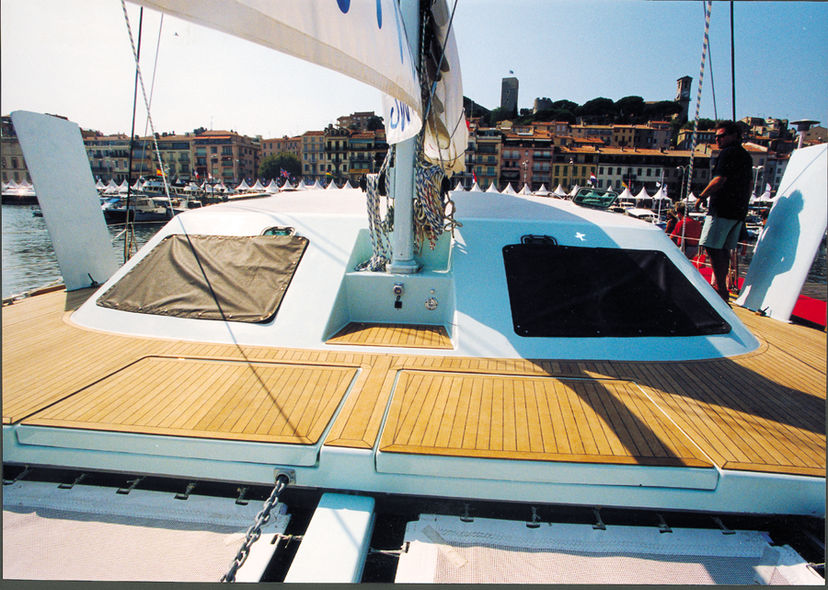
You can remove the old portlight for use as a template...as long as your boat is under shelter! On our Aventura 23, the starboard portlight disappeared, following a capsize when it ran aground. We transfer the measurements using wooden battens and clamps.
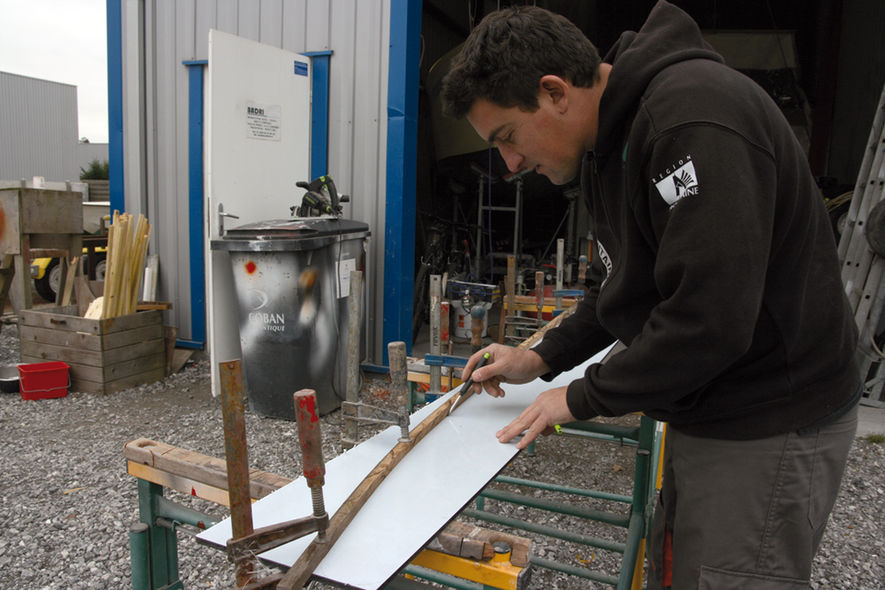
Ready for cutting! The film protecting both sides of the Perspex remains in place. We preferably use a circular saw for long lengths: the blade is adjusted to exactly the right thickness, here 8mm. No need to move the Perspex!
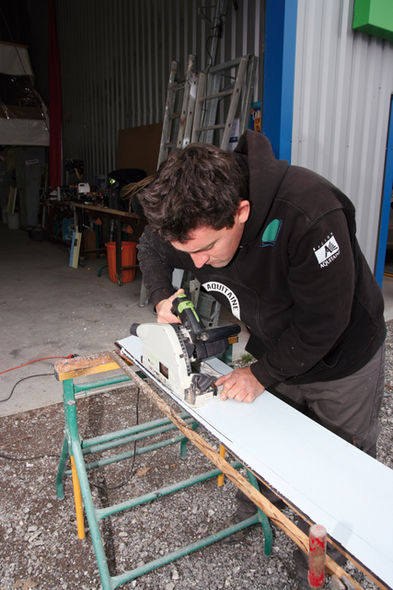
The front part of the portlight has a very tight curve: it is cut out with the help of a jigsaw, as are the rounded angles at the rear. Remember to immobilize your Perspex well.
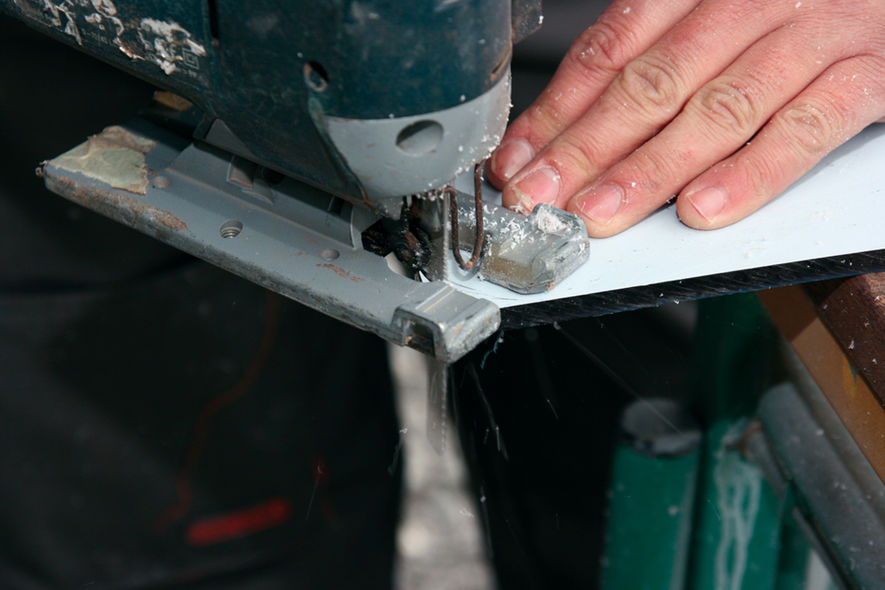
The upper edge of the portlight is rounded off with the help of an orbital sander. We use four different disks for an optimum finish: the grains used here are 80, 120, 220 and finally 500.
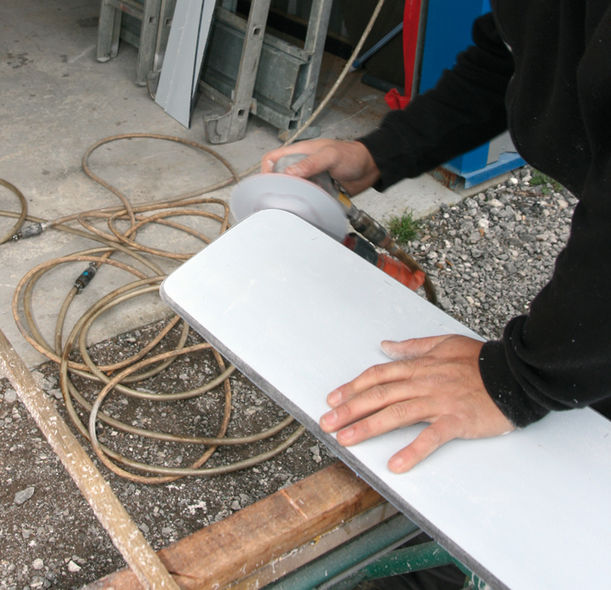
To obtain a good finish on the angles, we use a polishing paste. Products intended for cars are perfectly suitable. Polish well for a faultless shine
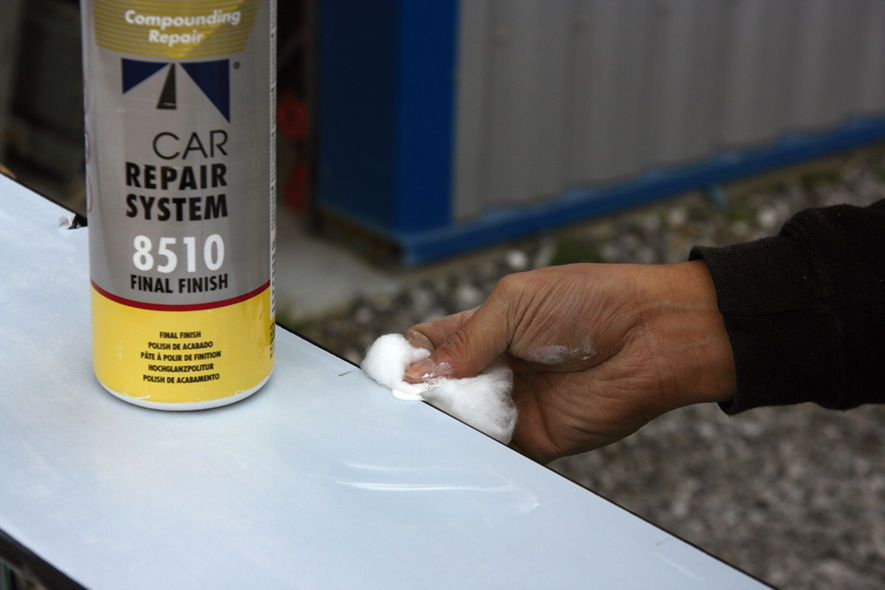
From now on, it’s best if there are two of you working! Equipped with portlight nuts (preferably in stainless – around 1 euro each; aluminum often proves impossible to dismantle), position the portlight, drill four holes from inside and fix it.
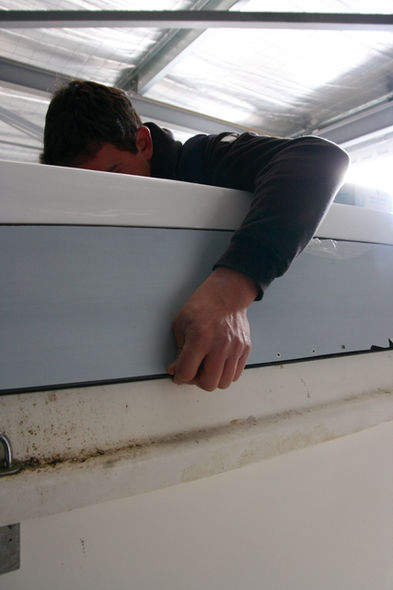
From inside, drill the Perspex, using the holes in the fiberglass as a guide. From outside, it's useful for your helper to press hard on the Perspex to make drilling it easier...but be careful of his or her hands!
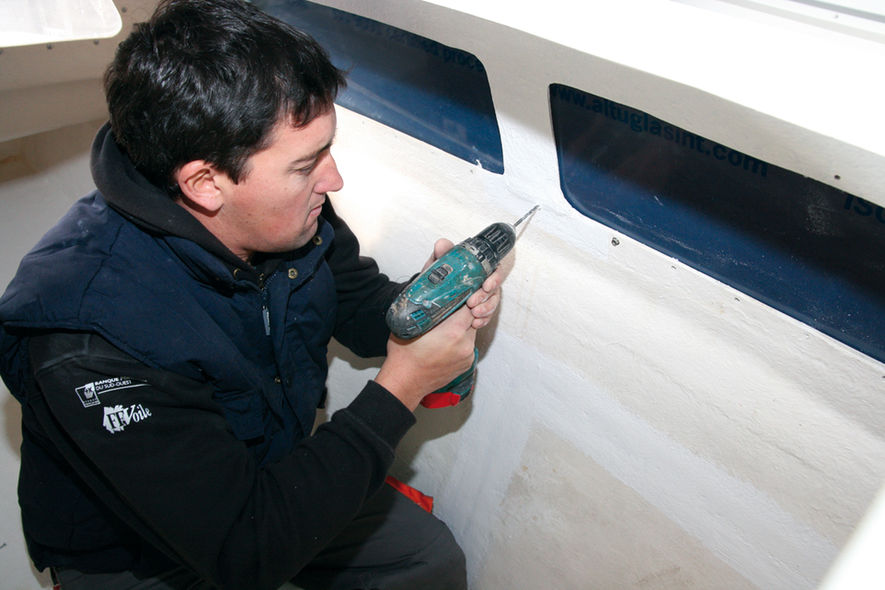
Before dismantling the portlight, run a Stanley knife along the interior angles: it will thus be easy to remove the protection from the joint contact area. The other parts will remain protected by the film.
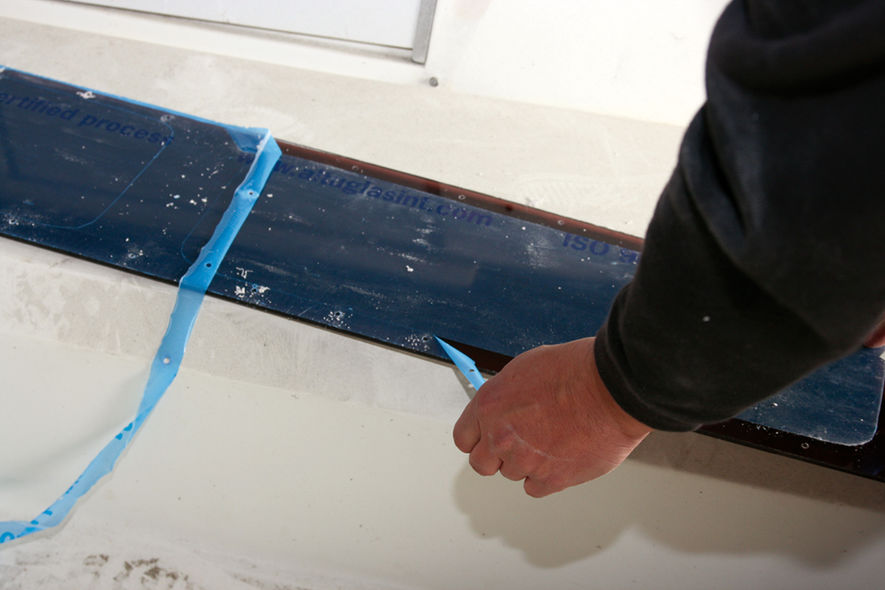
On the outside of the portlight, countersink each hole with a drill bit of the same diameter as the bolt ...
What readers think
Post a comment
No comments to show.